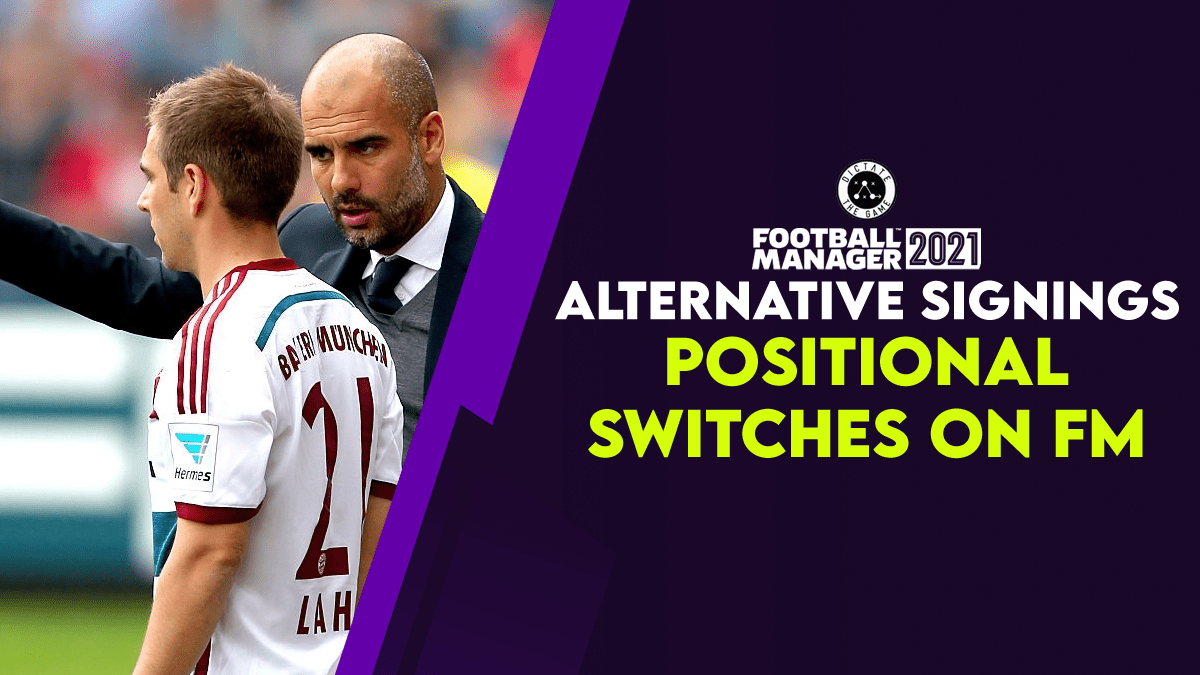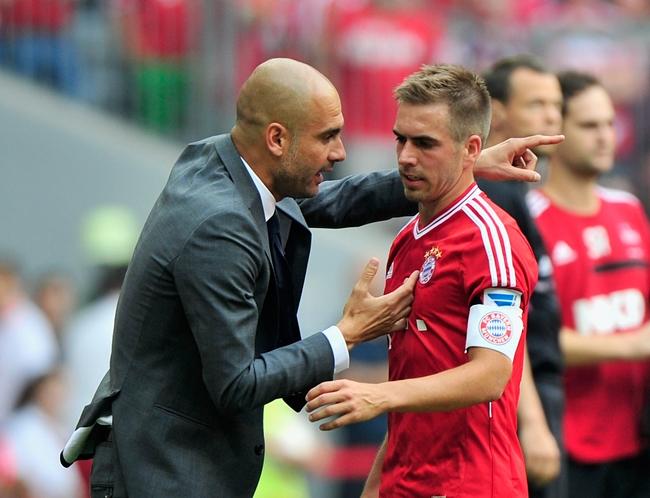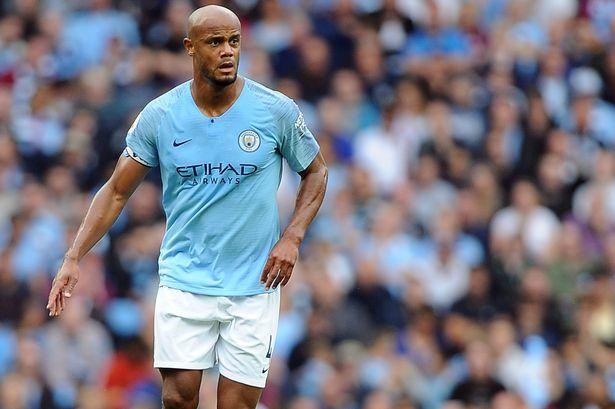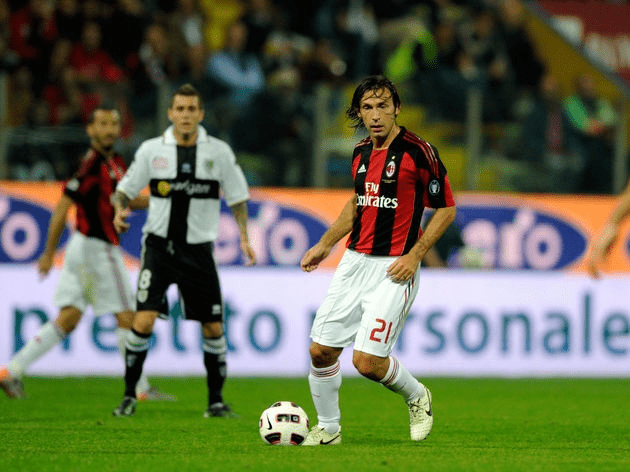
Alternative Signings: Positional Switches on FM
Navigating the turbulent waters of the transfer market is one of the great pleasures of playing Football Manager; finding that future world-beater, snatching that top-class player on a free from a rival, or simply closing a long wanted signing. But sometimes, be it through budget limitations or time constraints, it’s hard to find the players you need. When necessity becomes urgent, it’s time for some improvisation. Here are five positional switches you can try and pull off with alternative signings on FM.
The art of the Positional Switch
What do Thierry Henry, Bastian Schweinsteiger, Andrea Pirlo and Vincent Kompany all have in common? They were, at some point in their careers, switched from their original playing positions to a different one, where they thrived. Why? Because they were adaptable, sure; but also because they played in positions that have a similar range of required skills. They were moved into positions that better took advantage of said skills, and provided better cover for their weaknesses.
So how can we take advantage of that on FM? Well, take a look at the abilities a position requires and looking for another spot on the field that calls for the same array of qualities. It won’t be an instant fit, but it can be a lifesaver when your resources are limited. With time and training, Positional Abilities will improve and you’ll forget it ever was a last-minute alternative signing.
Full-Back to Defensive Midfielder
Notable real-life examples: Philipp Lahm, Fabinho

It may not come as a surprise to the more tactically aware amongst you, but this is one of the switches that happen most often on international football. Generally, it happens when skilled fullbacks lose a step or two during the latter parts of their career. The most famous example is that of Philipp Lahm. Arguably the best wide defender of his generation, under Pep Guardiola he transitioned into a defensive midfielder. The Spanish coach wanted to take advantage of the Bayern captain’s intelligence and quality off the ball but felt he lacked a bit physically to continue playing on the flanks. However, it’s not only the wound up dynamos that become key men in the centre. Liverpool’s Fabinho played mainly as a right-back on his AS Monaco days before Klopp decided to use him as his ball winner.
What do you want in a Full-Back so he can thrive as your next midfield destroyer? You’re looking for players with high Marking, Tackling, Passing on a technical side, high Anticipation, Concentration, Decisions, Positioning, Teamwork and Work Rate on the mental side and high Stamina on the physicals. Agility, Strength, First Touch, and Technique are useful optionals. This makes many sub-par wide defenders an interesting target; you’re not looking for any high degree of Crossing, Dribbling, Acceleration or Pace, the marks of a pricey attacking Full-Back. These are of no interest to you as you’re looking for a solid defender with good mentals and not a creative outlet on the wings.
Inside Forward/Winger to Striker (and vice versa)
Notable real-life examples: Thierry Henry, Cristiano Ronaldo, P-E Aubameyang

Another switch that managers did over the years, many pacey wingers have moved over to the centre-forward spot. Sometimes it’s done out of necessity. When Cristiano Ronaldo lost a bit of his trademark speed he started playing centre-forward, but that’s not always the case. Thierry Henry was famously moved from the left flank into the centre by Arsene Wenger; the French manager felt his protege’s pace could be far more lethal going at the early-Premier League’s less refined Centre-Backs. It can even happen the other way around. Pierre Emerick Aubameyang, a pure striker since his St Etienne days, moved to the left-wing under Arsenal manager Mikel Arteta to great (early) effect.
As is in real life, this switch can be done fairly easily on Football Manager. Look for players with high Finishing, First Touch, Composure, Off the Ball and a healthy dose of Acceleration, Agility and Pace, all of which are part of both position’s skill sets. Useful extras are Heading, Dribbling, Passing, Decisions, Jumping Reach and Strength, but not mandatory. If you’re looking to turn a Striker into an Inside Forward or a Winger you should also pay attention to their Preferred Foot; it becomes a key factor depending on whether you intend for them to cut inside or dribble wide.
Defensive Midfielder to Centre-Back
Notable real-life examples: Vincent Kompany, Javier Mascherano

Whilst it’s a trend that’s been changing at the elite, it is often the case that players will be developed in a way that prioritizes effectiveness over anything else. This can mean that, particularly at lower levels, you can end up with players who possess a rather limited array of qualities. Nowhere is this as evident as in the Centre-Back position. The evolution of tactics has led to new ball-playing demands leaving some great defenders looking like dinosaurs of the game. That’s why so many midfielders have been dropping into central defence; they provide other options when playing from the back and recycling play. Both Kompany and Mascherano arrived at their clubs as DMs but quickly found themselves playing in defence, where their abilities made them key.
If you’re looking to get a ball-playing option at the back, why not go for a talented DM that can grow into the role? Attributes you’re looking for are high Heading, Marking, Tackling, Aggression, Anticipation, Concentration, Decisions, Positioning, Jumping Reach and Strength. First Touch, Passing and Technique thanks to the player’s development as a midfielder will come in handy. However, stay on the look for Player Traits that may hurt you as a Centre-Back; “Arrives Late in Opponents’ Area”, “Runs with Ball Often”, “Gets Forwards Whenever Possible” or “Plays way out of trouble” aren’t deal-breakers, but can be troublesome depending on your setup.
Creative Midfielder to Deep-Lying Playmaker
Notable real-life examples: Andrea Pirlo, Toni Kroos

The game is always getting faster, there’s (ironically) no running away from it. The players are fitter, the materials are lighter, the tactics are bolder and more complex; it is an unavoidable trend. That often means that there are spaces and positions which used to thrive and now are disappearing.
One such spot is the pure creative midfielders. Managers are asking these players to perform a wide range of tasks in all sorts of ways; those who can’t do it are losing ground fast. That doesn’t mean there can be no space for a midfield maestro. You only have to find them a place where their creativity can thrive. And this can be a blessing in disguise. Take a look at the careers of Andrea Pirlo and Toni Kroos; they had a difficult start as creative midfielders only to flourish in a position where their teams could put to use their quality on the ball and long passing range.
This is a fantastic trick to keep up your sleeve on FM. The big difference between these positions is the physical and work rate requirements. The Attacking Midfielder needs to be far more mobile and active to receive the ball in dangerous areas and create chances. The extra space the DLP gets ensures an easier path to getting the ball and doing something with it. Keep an eye out for any AM with high First Touch, Passing, Technique, Decisions, Teamwork, and Vision. If you’re also looking for him to provide some defensive cover, Tackling and Positioning become important, though far harder to come by. Also keep an eye open for Player Traits like “Dictates Tempo”, “Tries Killer Passes Often” and “Comes Deep To Get Ball” which can help the best out of your new playmaker.
Winger to Full-Back
Notable real-life examples: Antonio Valencia, Gianluca Zambrotta, Victor Moses

Our final Positional Switch is one that has been done on emergencies quite often, and sometimes to great success. A football season is a long, gruelling affair. Teams often play 50 or more matches depending on a variety of factors; this means injuries are bound to happen and that’s when bad recruitment can prove costly. When a team has no available wide defenders, the mantle often falls to a winger. They’re expected to cover the spot and do their best not to look out of place. Then again, it might just be a stroke of genius. The likes of Valencia, Moses and Zambrotta have found their careers radically extended, improved or made by finding a spot as a wide defender that they can call theirs. It makes perfect sense. Wingers are naturally fast and skilled. While they can make some defensive blunders, with the right cover they can be overcome.
On FM, the switch from Winger to Wide Defender can be done fairly easily; many wide players already know how to cover most of the flank. You’ll generally end up with an attacking Full-Back or Wing-Back, but much like in real life, with the right balance and cover they can prove a devastating force. Look for players with high Teamwork, Work Rate and Stamina as they’re going to need to compensate their lack of defensive skill with effort. Crossing, Dribbling, Passing, Concentration, Acceleration, and Pace are also important and vital to their offensive output. Beyond that, any extra point in Marking, Tackling, Anticipation and Positioning can be very useful. Be alert for their Preferred Foot being the outside foot and Player Traits that might hinder your player defensively like “Gets Forwards Whenever Possible”.
Final Thoughts
Position Switching can be a tricky art to dominate, but one that can yield immense results. Bringing a player with a different skill set to a new position can open new possibilities and unlock previously unearthed potential, but it can also be desperately annoying. Don’t be disheartened if your player struggles at first; you’re asking him to perform at a spot he’s most likely never played. If anything, always consider this… things can do nothing but improve.
Enjoyed this? Here are other articles for you:
Making a Profit in FM21: Retraining, Free Agents & Affiliates
Possession Football in FM21: A Tactical Counter
Zona Mista: When Catenaccio Met Totaalvoetbal
Football Manager Tactical Styles